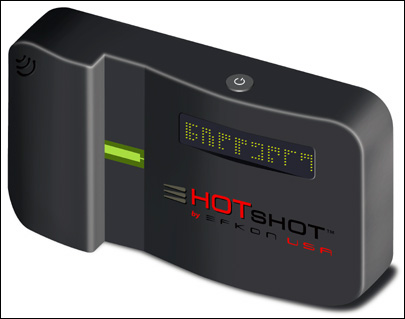Some tolling agencies have begun converting high-occupancy vehicle (HOV) lanes into high-occupancy toll (HOT) lanes. HOT lanes allow multiple-occupancy vehicles free access during off-peak times of the day, while charging all vehicles during peak-usage hours to maximize traffic flow and encourage ride sharing.
To determine the number of occupants in a given vehicle, agencies offering HOT lanes are testing a range of methods, says Christine Bowrey, an applications engineer at Efkon USA, a Texas subsidiary of Austrian traffic-management and tolling technology provider Efkon. These methods range from facial-recognition cameras mounted around tollbooths to systems that are completely manual.

However, Bowrey explains, such methods are either unreliable (tinted windows, for instance, might mask some occupants from cameras) or too slow and labor-intensive. Efkon USA, she says, is now marketing a system designed to solve this problem. The product, called HOT Shot, is based on ultrahigh-frequency (UHF) RFID and infrared (IR) technology that will charge driver accounts linked to RFID transponders attached to vehicle windshields.
The HOT Shot concept would put the onus on the occupants to convey the number of occupants in the vehicle before entering a HOT lane. HOT Shot consists of a compact device (13 by 6 by 2 centimeters) carried inside a vehicle and containing a UHF RFID active transponder for transmitting the driver’s ID to an electronic toll collection system. It also utilizes a high-frequency (HF) interrogator, a fingerprint scanner and an IR transponder.
After a driver registers for a HOT Shot device from a local tolling agency, that person and up to seven passengers who regularly ride in the vehicle are added to a list of occupants linked to that device. During registration at the tolling agency, the driver and occupants must submit to a fingerprint scan, which is encoded to an RFID-enabled smart card—containing an NXP Mifare ISO 14443 standard HF tag—issued to each registrant. This card must be carried whenever a person uses the HOT system.
Before driving through a HOT lane, each occupant in the car—who must already be listed in the database of registered drivers or occupants—presents the smart card to the HOT Shot device. The device reads each card and prompts its owner to swipe a finger across the scanner for authentication purposes. According to Efkon, the system enables the account holder to use the HOT lanes and be charged accurately, based on the number of passengers in the car.
The HOT Shot device transmits the driver’s account identification number to the RFID interrogators, which are already in place in existing electronic toll-collection sites. It transmits the passenger information via the IR transponder, to an IR reader installed by the tolling agency. IR is used instead of RFID for transmitting passenger data, says Bowrey, because it can transmit a larger amount of data than RFID while the car is moving at highway speeds through the HOT lane.
The HOT Shot device runs on a lithium-ion battery. This battery is periodically recharged by a small solar panel on its windshield-facing side. The company claims it can power the device for 10 years.
The back-end software Efkon provides will link into existing toll systems’ software, allowing it to charge accounts according to the number of occupants. It will also be able to charge according to time, in the event that rates change based on the time of day. No tolling authority is yet using or testing the HOT Shot system, says Bowrey, but the company is pursuing organizations that have already deployed or are using HOT lanes in a several states, including California and Texas. These tolling agencies use active RFID transponders issued to drivers to charge single riders (excluding motorcyclists), while cars with two occupants (or, in some cases, three) ride for free during all but peak traffic hours.
To bring the platform to market, Efkon licensed UHF 915 MHz active RFID tags and electronic tolling technology from Sirit, a provider of automatic vehicle identification and electronic tolling systems. In 2002, TransCore, another provider of RFID-enabled electronic toll technologies, introduced a passive UHF RFID system that also matches drivers to vehicles (see RFID Speeds Border Crossings). That solution, however, does not authenticate the driver and occupants via biometrics. TransCore recently announced that its eGo RFID electronic toll-collection platform is seeing rapid adoption—better than anticipated, in fact—by Puerto Rico’s highway and transportation authority (see RFID News Roundup).

